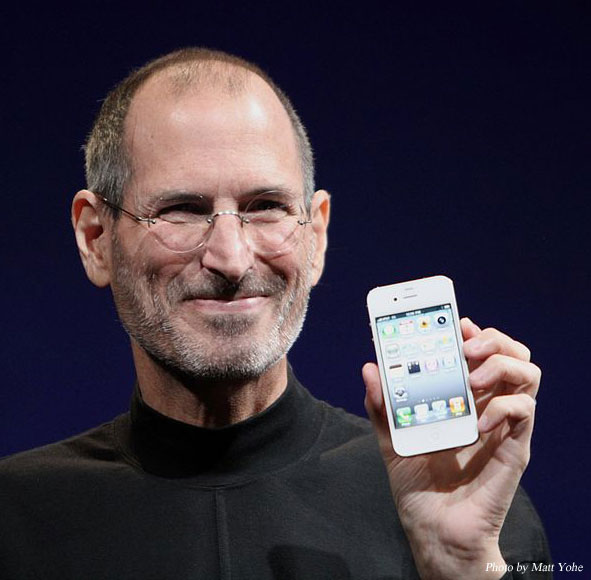Loving the iPhone? Thank Steve Jobs and Human-Computer Interactions
 iTechnologies pave the way for new fields of psychological science
iTechnologies pave the way for new fields of psychological science
The late Steve Jobs is considered the Thomas Edison of our time. His innovations not only sold in a down economy, but the technology created by Jobs revolutionized the way we live our lives and interact with others. With the anticipated release of the iPhone4, a New York Times op-ed by Martin Lindstrom said that brain scans of participants who saw a vibrating iPhone “responded to the sound of their phones as they would respond to the presence or proximity of a girlfriend, boyfriend or family member. In short, the subject didn’t demonstrate the classic brain-based signs of addiction. Instead, they loved their iPhones.”
Whether its true love or addiction, enjoying your iProduct is no coincidence. Innovative electronics like the iPhone are crafted to be enjoyable and easy to use. The need for a human element in these electronics has led to new, multidisciplinary areas of psychological research such as the field of human-computer interaction (HCI). HCI is the study of the interaction between people (users) and computers, a mix of computer science, behavioral sciences, design and several other fields.
APS member John Carroll studies HCI at Penn State’s College of Information Sciences and Technology. Carroll says on his website that “HCI has expanded rapidly and steadily for three decades, attracting professionals from many other disciplines and incorporating diverse concepts and approaches. To a considerable extent, HCI now aggregates a collection of semi-distinct fields of research and practice in human-centered informatics.”
Many other APS members are conducting research in various areas of HCI. After receiving the Humboldt Research Award, Roberta Klatzky from Carnegie Mellon University is currently working with Martin Buss at the Technical University of Munich in Germany on “important technical problems about how a robot can ‘read’ the responses of humans and respond to them on the fly.” Peter Pirolli studies augmented social cognition (which is how groups remember, think, and reason) at the Palo Alto Research Center (PARC). He also discusses HCI topics in his blog. Jennifer Golbeck, Director of the Human-Computer Interaction Lab at the University of Maryland, studies how to transform the experiences people have with new technology. She focuses on understanding user needs, and developing and evaluating those technologies so the needs and dreams of people can be reflected in future technologies.
Steve Jobs was the mastermind behind Apple, but psychological scientists who study HCI are also helping to make technology more user friendly. Who knows, maybe people will fall in love with their e-readers too.
To learn more about the field of human-computer interaction, watch this overview of HCI made by students at the University of Washington:
For more on the mind behind Steve Jobs visit this MSNBC article Behind a visionary: The science of Steve Jobs, which cites Psychological Science and a forthcoming issue of Current Directions in Psychological Science.





APS regularly opens certain online articles for discussion on our website. Effective February 2021, you must be a logged-in APS member to post comments. By posting a comment, you agree to our Community Guidelines and the display of your profile information, including your name and affiliation. Any opinions, findings, conclusions, or recommendations present in article comments are those of the writers and do not necessarily reflect the views of APS or the article’s author. For more information, please see our Community Guidelines.
Please login with your APS account to comment.